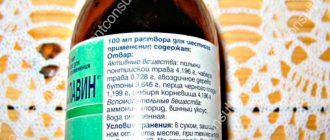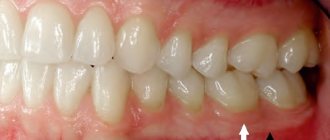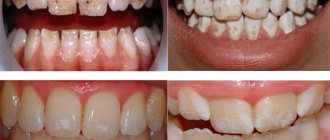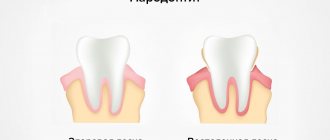Dental periodontal disease is a dental term used to describe a disease that affects the soft tissues of the oral cavity. How to cure periodontal disease - this issue should be taken care of by any person who has discovered the primary signs of this disease, because if it reaches a certain stage of development, it will be impossible to cure it, and the consequences will be the most severe. Advanced periodontal disease can lead to loosening and tooth loss. In this article we will talk in detail about the causes, signs, and methods of effective treatment of periodontal disease.
Gum periodontal disease: what is it?
Dental periodontal disease is a pathological process that causes disturbances in the blood circulation in the oral cavity. Due to disruptions in blood circulation, a gradual thinning of the mucous membrane occurs, which in turn leads to exposure of the roots of the teeth and bone tissue atrophy. But this is not all the consequences that periodontal disease can lead to: in the advanced stages of the development of this disease, teeth begin to become loose and may begin to fall out.
In this case, malocclusion and the appearance of an unpleasant putrid odor from the mouth are also noted. In order to prevent such unpleasant phenomena, treatment of periodontal disease should be started immediately, at the first manifestations of the disease. It is also worth knowing that periodontal disease has its own classification - according to distribution, form and stage of development. The choice of method and means for treating periodontal disease will depend on the type, form, and stage of the disease. According to the degree of distribution, the following types of periodontal disease are distinguished:
Calculate the cost of treatment by taking a short test in 20 seconds!
Do not delay your treatment, because in this matter time plays against us.
- Local, affecting a certain area of the dentition and not spreading to other areas of the oral cavity;
- Generalized, affecting the dentition in the upper and lower jaw.
According to the nature of the course, acute and chronic forms of periodontal disease are distinguished, and five phases of the development of the disease are distinguished, each of which has its own specific symptoms. We will examine in detail the phases of development of periodontal disease, symptoms and treatment of different stages of the disease in the following sections of the article.
Middle stage
Two to three millimeters of tooth roots are exposed. X-ray photographs show destructive processes of bone tissue, affecting almost half of the tooth roots; sclerotic foci can be identified.
Heavy stage
The patient is observed to have four to five millimeters of exposed tooth roots. X-rays show damage to bone tissue, which covers two or three tooth roots. Pain symptoms appear when exposed to high or low temperatures or taste stimuli.
Symptoms of dental periodontal disease
How to treat periodontal disease? The answer to this question will largely depend on the stage to which the development of the disease has reached. There are five phases of the development of periodontal disease and each stage has its own symptoms:
- The initial phase of periodontal disease. At this stage, the inflammatory process is just beginning and therefore the disease has no symptoms. Periodontal disease can be detected at this stage of development only during an examination in the dentist’s office.
- Primary phase of periodontal disease. It is characterized by insignificant receding of the gums, but the dental units in the sockets are held quite firmly, and it is possible to detect the beginning of bone tissue atrophy only through radiography.
- Secondary periodontal disease reveals itself by the obvious exposure of the cervical part of the teeth and the appearance of interdental spaces; radiography clearly shows pathological changes in the alveolar process. The patient may begin to experience severe tooth sensitivity.
- At the third stage of development of periodontal disease, the roots of the teeth are exposed by more than half, the spaces between the teeth grow in width, and the teeth begin to loosen in the sockets. Teeth sensitivity to sour, sweet, cold and hot foods increases.
- In the fourth phase of the development of periodontal disease, the teeth become so mobile that the patient cannot speak or eat normally.
In order to correctly select remedies for periodontal disease and methods of its treatment, it is important to promptly diagnose the disease and determine its phase of development. This can be done by visiting Vanstom dentistry in Moscow. Our clinic uses the most effective treatments for periodontal disease and innovative techniques that can help avoid the disease becoming chronic and all the associated negative consequences.
Causes of periodontal disease
It is impossible to name a specific reason why periodontal disease occurs, but dental experts have found that this disease always occurs against the background of metabolic disorders in the body, which can arise due to a number of pathologies. Most often, dental periodontal disease is accompanied by the following diseases:
- Disturbances in the functioning of the endocrine system, severe hormonal imbalance;
- Gastrointestinal pathologies;
- Deficiency of vitamins and minerals;
- The patient’s bad habits – in particular, tobacco and alcohol addiction;
- Neurological diseases;
- Bite abnormalities.
Also, periodontal disease is often observed with weakened immunity, against the background of injuries to the jaws and oral cavity. To choose the most effective treatment for periodontal disease in a specific clinical case, you need to identify the cause that triggered the onset of the disease, and this can only be done by conducting a series of tests prescribed by a periodontist.
Diagnostics
Diagnosis of this disease is carried out comprehensively and involves taking an anamnesis, during which the dentist finds out:
- the presence of other dental pathologies;
- presence of periodontal disease in parents;
- what complaints does the patient have?
This is followed by a dental examination. If the doctor has suspicions, he sends the patient for an x-ray, which reveals:
- reduction in the height of interdental septa;
- tartar in the area of the mouth of the teeth;
- reducing gaps between teeth and the walls of the sockets in which periodontal tissues are located.
Professional methods of treating periodontal disease
Practice shows that it is most effective to treat periodontal disease in the clinic, rather than at home, since professional dentistry has in its arsenal powerful and targeted drugs and technologies that can prevent the development of periodontal disease until the critical phase. The course of treatment for periodontal disease in dentistry will consist of many stages, each of which we will consider in detail below:
Professional Inspection
Before beginning the process of treating periodontal disease, the patient undergoes a professional examination by several specialists: a dentist, a hygienist, an orthodontist and a periodontist. Each specialist prescribes a different series of tests for the patient and carries out a set of specific procedures for the effective treatment of periodontal disease. An obligatory step in the treatment of dental periodontal disease will be an X-ray examination, which will help to accurately determine the degree of destruction of dental units.
Based on the tests and x-rays performed, the treating specialist will draw up a detailed treatment plan for periodontal disease in a specific clinical case.
Sanitation of the oral cavity for periodontal disease
Dental deposits and bacterial plaque are not the causes of periodontal disease, but it has been proven that they accelerate the rate of its development and therefore treatment of periodontal disease will be effective only if high-quality sanitation of the oral cavity is carried out before it. The procedure is carried out in the periodontist’s office and uses ultrasound, which ideally cleans the dental surfaces of all types of deposits.
Drug therapy for periodontal disease
The most effective treatment for periodontal disease is complex therapy, in which a separate place is occupied by a course of medications selected by your attending physician. Usually these are vitamins, hormonal and anti-inflammatory drugs, drugs that strengthen the immune system. Often, when treating periodontal disease, the patient is prescribed a course of injections with drugs that will saturate the tissues affected by the disease with oxygen and slow down the rate of development of the inflammatory process. If a patient's periodontal disease is diagnosed in an acute form, antibiotics and rinses with antibacterial solutions may be prescribed.
Physiotherapy for periodontal disease
The purpose of using physiotherapeutic procedures in the treatment of periodontal disease is to normalize blood circulation in the soft tissues of the oral cavity. Physiotherapy also helps eliminate swelling of the gums and saturate the tissues with oxygen. The range of physiotherapeutic measures is determined by the doctor when drawing up a treatment plan for periodontal disease.
Elimination of caries, diseased teeth and splinting for periodontal disease
In order for the treatment of periodontal disease to be effective, caries must be treated. A huge number of pathogenic microorganisms accumulate in carious cavities, which provoke gum inflammation. If the destruction of a dental unit has reached a significant stage, it is removed.
If periodontal disease has developed to the stage at which tooth mobility appears, a splinting procedure is performed. It is necessary because the instability of the teeth provokes active atrophy of bone tissue, and this is fraught with the loss of teeth from the sockets and their divergence in different directions. Splinting reduces the degree of tooth mobility and stops the process of bone tissue destruction.
An important nuance: if a decision is made about the need for surgical intervention in the treatment of periodontal disease, splinting is mandatory.
Surgery for the treatment of periodontal disease
Surgical intervention is used at critical stages of the development of periodontal disease, in which the depth of the periodontal pocket reaches ten millimeters or more. A periodontal canal is a depression formed when the natural attachment of the soft gum tissue to the tooth is disrupted. If such a pocket is shallow, then in the process of treating periodontal disease you can do without using the surgical method. However, in the third and fourth phases of development, the pocket depth can reach 7-11 millimeters and the use of medications in such circumstances will not give any positive changes in the treatment of periodontal disease, and only surgical intervention can help correct the situation.
During the operation, the dental surgeon restores bone tissue, using for this purpose special materials that catalyze the growth of natural bone material. This manipulation allows you to strengthen loose teeth and prevent further development of the disease.
Also, in the treatment of periodontal disease, prosthetics may be prescribed. It is mandatory even if only one tooth is missing in the dentition. If all the patient’s teeth are intact, but periodontal disease has caused the formation of significant gaps between them, the defect is eliminated by installing metal-ceramic bridges.
Another technique that can be used for periodontal disease is laser treatment. This technology should be considered exclusively as an auxiliary means of therapy that can help remove the unpleasant symptoms of the disease as quickly as possible - swelling of the gums, bleeding.
Let us write once again that complete treatment of periodontal disease is always a whole complex of the most diverse measures, and only such therapy can save you from this unpleasant disease.
Is it possible to treat periodontal disease at home?
It is impossible to cure periodontal disease at home - it is a serious disease, the successful treatment of which requires a professional and comprehensive approach. However, a number of procedures can and should be carried out at home; they will help speed up the process of treating periodontal disease. Home remedies for periodontal disease are prescribed by your doctor.
Experts usually prescribe patients to use various ointments and gels with anti-inflammatory and antibacterial effects at home. In the early stages of the disease, a special paste for periodontal disease may be an effective treatment. You cannot cure yourself with such a paste, but it will help remove swelling and bleeding gums and bad breath. Patients who have been treated for periodontal disease write in reviews of pastes that the best results in eliminating the unpleasant symptoms of the disease are provided by formulations with natural ingredients - herbs and vitamin complexes.
Toothpastes
You can also cure periodontal disease at home using special toothpastes with an anti-periodontal effect. Unlike conventional dental hygiene products, medicinal pastes contain antimicrobial components, minerals and plant extracts. They have a beneficial effect on the condition of the gums, improve blood microcirculation, relieve inflammation, and stimulate periodontal renewal.
Medicinal toothpastes for the treatment of diseases:
- LACALUT Active
- PRESIDent Active
- Splat Green tea
- Parodontax
- Forest balm
- Parodontol Active
You should use medicated toothpastes only after consulting your dentist. They are used to brush your teeth twice a day for 3 minutes using massage toothbrushes. Courses of treatment last 30-60 days with breaks between them of 2-3 months.
Will traditional medicine help?
On the Internet, on many sites, you can find recipes for the treatment of periodontal disease with folk remedies. However, let’s say right away that traditional treatment of periodontal disease may turn out to be completely useless, since it is only possible to stop the development of the disease by using professional techniques. Moreover, the use of some recipes can be harmful, provoking the active development of inflammatory processes.
If you still want to try folk remedies or homeopathy to speed up the pace of periodontal disease treatment, be sure to coordinate all your actions with your doctor.
Calculate the cost of treatment by taking a short test in 20 seconds!
Do not delay your treatment, because in this matter time plays against us.
Recipes for strengthening bone tissue:
- Take 20 g of myrrh, add 15 g of chopped mint and raspberry leaves. Dilute a mixture of 80 g of wine alcohol and 25 g of vinegar. Stir and pour into a glass jar. Leave for 3 days in a dark place. Afterwards, rinse your mouth twice a day.
- Pour 50 g of chopped sage into 100 g of boiling water. Leave covered for an hour. Rinse your mouth thoroughly.
- Chop fresh plantain leaves and crush well. Soak a clean cotton swab with the resulting juice and wipe the gums with it.
- Pour 30 g of dried calamus into 0.5 liters of vodka. Leave for a week in a dark place, then strain. Add 3 tbsp. l. mixture into a glass of water and rinse your mouth for 3-6 minutes.
- 6 tbsp. l. Mix crushed pine needles with a liter of boiling water. Bring to a boil, strain and set aside. Rinse your mouth morning and evening.
Prices for periodontal disease treatment in Moscow
Without an examination and a series of tests, it is impossible to say exactly how much periodontal disease treatment will cost. The price of the service will take into account those measures that will be included in the treatment plan drawn up for you at the dental clinic, and will also depend on the stage of development and form of periodontal disease. To find out the exact amount of treatment, visit our dentistry in Moscow “Vanstom” and get detailed advice from our specialists. We are located in the center of Moscow, next to the Baumanskaya metro station.
It is important to know that the sooner measures are taken to treat periodontal disease, the higher the chances of its final cure. If the disease reaches critical phases of development, medicine will be powerless, since chronic periodontal disease is incurable. Therefore, if, based on a number of symptoms, you suspect that you have periodontal disease, do not delay a visit to the dentist. In our clinic in Moscow “Vanstom” you will find services of the highest level of quality, innovative techniques for the treatment of periodontal disease, modern equipment and materials, and an individual approach to each patient. Address of our dentistry: Moscow, Baumanskaya metro station, st. Bakuninskaya, 17/28.
Our doctors
18 years of experience
Baghdasaryan
Armen Evgenievich
Chief physician, dentist-orthopedist-therapist
Graduated from VSMA named after. N.N. Burdenko. Internship on the basis of MGMSU named after. A.E. Evdokimov in “General Dentistry”.
Clinical residency at the Moscow State Medical University named after. A.E. Evdokimov in “Orthopedics”.
More about the doctor...
5 years experience
Sadina
Ekaterina Vladislavovna
Dental therapist, surgeon
Penza State University Medical Institute, specialty “Dentistry”.
In 2021, she underwent professional retraining in the specialty “Therapeutic Dentistry” at the Moscow State Medical and Dental University named after A.I. Evdokimov.
More about the doctor...
8 years of experience
Arzumanov
Andranik Arkadievich
Dentist-orthodontist
Graduated from Moscow State Medical University. Internship - Moscow State Medical University at the Department of Orthodontics and Children's Prosthetics.
Residency at Moscow State Medical University at the Department of Orthodontics and Children's Prosthetics. Member of the Professional Society of Orthodontists of Russia since 2010.
More about the doctor...








